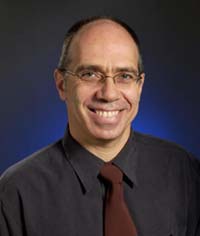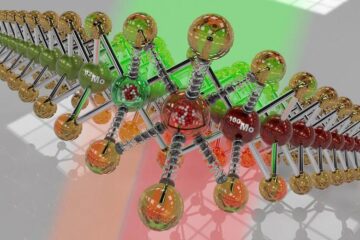Latest News

Young sea animals clone themselves – century-old debate halted
After more than a century of intensive study, scientists have assumed that larvae of non-parasitic invertebrates reproduce only very rarely, but new research by University of Alberta scientists overthrows this conventional wisdom. Graduate student Alexandra Eaves and Dr. Richard Palmer, from the U of A’s Faculty of Science, have found that asexual cloning by some marine invertebrate larvae is not as rare and enigmatic a phenomenon as previously assumed.
“A wealth of knowledge of how em

Tiny Holes Capture Light, Could Boost Sensor Capability
Scientists at Ohio State University have found a way to boost the light absorption of a metal mesh up to 1000 times, possibly paving the way for powerful chemical sensors and laboratory instruments.
Key to the technology is a new coating technique that enables the mesh to capture and transmit more light through its microscopic holes than would normally be possible.
James V. Coe, associate professor of chemistry at Ohio State, and his colleagues also found that if they coated the mes

New technique creates patterns in photonic crystals formed from hydrogel nanoparticles
Creating unique structures
Researchers have developed a laser-based technique for creating patterns in self-assembled colloidal crystals produced from hydrogel nanoparticles – soft spheres that respond to heat by changing size. The development could make possible the fabrication of waveguides, three-dimensional microlenses and other photonic structures from the unusual crystals.
In related work, the Georgia Institute of Technology researchers have also learned to use weak at

Study shows prions stick around in certain soils
Dirt may help scientists answer a question that has baffled them for decades: How does chronic wasting disease (CWD) in deer and elk spread from animal to animal?
By turning to the land, University of Wisconsin-Madison researchers show that prions – infectious proteins considered to be at the root of the disease – literally stick to some soil types, suggesting that the landscape may serve as an environmental reservoir for the disease.
The findings will be discussed during a poste

Fe-TAML(R) activators developed at Carnegie Mellon help cleanup paper and wood pulp manufacturing
Potent, environmentally friendly catalysts called Fe-TAML® activators, developed by scientists at Carnegie Mellon University, can destroy colored pollutants and toxic compounds resulting from paper and wood pulp processing.
The results of extensive field trials conducted by Carnegie Mellon University, Forest Research of New Zealand and the University of Auckland are being presented by Dr. L. James Wright of the University of Auckland on Wed., Sept. 10, in New York City at the 226th annual m

Fruit Fly Pheromone Receptor First Ever Discovered Linked to Specific Sexual Behavior
For the first time in any animal, Duke University Medical Center researchers have linked a single pheromone receptor in the fruit fly to a specific sexual behavior.
Pheromones are chemical signals exuded by many animals — including humans — that serve as stimuli to evoke behavioral responses in other individuals of the same species. Pheromones often attract members of the opposite sex and provide important cues during courtship and mating.
Yet little is known about pheromone re











